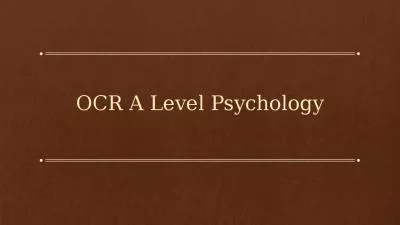PPT-Dr. Chris Dwyer School of Psychology
Author : breezeibm | Published Date : 2020-08-05
National University of Ireland Galway christopherdwyerphdgmailcom Study Skills Aggression is a serious problem in society It is commonplace to hear of events involving
Presentation Embed Code
Download Presentation
Download Presentation The PPT/PDF document "Dr. Chris Dwyer School of Psychology" is the property of its rightful owner. Permission is granted to download and print the materials on this website for personal, non-commercial use only, and to display it on your personal computer provided you do not modify the materials and that you retain all copyright notices contained in the materials. By downloading content from our website, you accept the terms of this agreement.
Dr. Chris Dwyer School of Psychology: Transcript
Download Rules Of Document
"Dr. Chris Dwyer School of Psychology"The content belongs to its owner. You may download and print it for personal use, without modification, and keep all copyright notices. By downloading, you agree to these terms.
Related Documents














